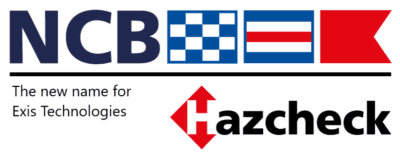Freight forwarders are an important link in the transport chain, taking the goods from the manufacturer or shipper and transporting them safely to the buyer either by road, sea, rail or air. When shipping dangerous goods by sea, forwarders must have a clear understanding of the IMDG Code, as well as customs clearance, documentation and other aspects of transporting goods. The IMDG Code, produced by the International Maritime Organization, is the ‘rule book’ for shipping dangerous goods by sea and is updated every two years.
Forwarders need a clear understanding of the IMDG Code
Forwarding companies can either make the decision to include the shipment of dangerous goods in their services or not. However, even those who do not handle dangerous goods consignments need to have the training and tools to be able to recognise DG as shipping them incorrectly (with regard to stowage, segregation and packaging) can lead to issues further along the chain. The correct documentation, including a dangerous goods note, needs to be supplied with the shipment. It is not the prime responsibility of the freight forwarder to correctly classify, pack and produce DG documentation for consignments, but forwarders do play a part in ensuring that their containers and pallets do not pose a threat. Warehouses containing dangerous goods also need to adhere to strict regulations relating to segregation and packaging.
The threats posed by misdeclared and undeclared DG in the supply chain
60 million packed containers are moved each year, and 10 per cent are declared as dangerous goods. Some ships carry more than 1,000 containers with dangerous goods on any given voyage. Most of the significant ship fires are attributed to misdeclared or undeclared dangerous goods. Mistakes can be made due to a lack of competence. Unfortunately in some cases, cargo is deliberately declared incorrectly to save cost or time. In other cases, the cargo may have been properly declared, but mistakes are made with packing and stowing the cargo in the container. Unless the container is physically opened and inspected, there is no way of knowing whether the cargo is safe for transport.

Hazcheck Systems
Hazcheck Systems incorporate the rules and data required to ship cargo under the IMDG Code. They have simplified IMDG Code classification, packaging, segregation, stowage and documentation for every link in the sea transport chain for the past 35 years. Hazcheck has been implemented by 80% of the major container lines.
Hazcheck Online (Amendment 40-20) is a globally used, web-based annual subscription service, for shippers, forwarders and agents shipping dangerous goods by sea. The system automatically takes the user through the process of checking a dangerous goods load for shipment in accordance with the IMDG Code requirements. It helps to identify stowage and segregation conflicts, ensure that packaging is correct and produce a dangerous goods note (DGN), if required, when the load is successfully processed.
Hazcheck Online can help forwarders who either do, or do not, offer dangerous goods shipping as part of their service, to check their shipments for misdeclared or undeclared DG. There is a substance (UN no) enquiry feature and the validation feature allows substances to be added to a load to find out if they comply and can be carried together safely.
IMDG Code training
To help train forwarders to identify dangerous goods and to move them safely, Exis offers an IMDG Code Forwarder/Consignor training course as part of its range of IMDG Code e-learning Amdt 40-20 online courses. The training, which complies with the mandatory shore-side requirements in Chapter 1.3 of the IMDG Code, is a certified Det Norske Veritas Learning Programme. An IMDG Code Refresher course is also available to make sure that training is kept up-to-date when a new Amendment is released.
Further information regarding Hazcheck Online, the full range of Hazcheck Systems and IMDG Code e-learning is available from www.hazcheck.com
See the article on Forwarder Magazine here








